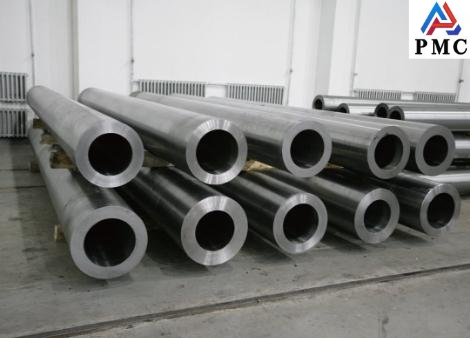
Cutting Methods of Thick-walled Seamless Steel Pipes
The hardness of thick-walled seamless steel pipes is relatively large, and methods and techniques must be mastered when cutting. The following seamless steel pipe manufacturers share with you what methods are there for cutting thick-walled seamless steel pipes?
1. Plasma cutting. Plasma cutting can cut various metals that are difficult to cut with oxygen cutting when combined with different working gases, especially for non-ferrous metals (stainless steel, aluminum, copper, titanium, nickel). Its main advantage is that when cutting thin metals, plasma cutting, especially when cutting ordinary carbon steel sheets, can reach a speed 5 to 6 times that of oxygen cutting, with a smooth cutting surface, small thermal deformation, and less heat-affected zone.
2. Mechanical cutting adopts two types: external installation and internal installation. It uses the principle of turning tool processing to cut and bevel the pipe mouth. The single machine has a large span, can process a large thickness, has less waste, is clean, does not generate high temperature during the processing, does not affect the pipe material, and is conducive to welding. Water cutting processes the pipe through the combined action of high-pressure pumps and corundum. Its incision is clean and the processing span is large, but its speed is low and the processing thickness is seriously limited.
3. Oxygen-acetylene flame cutting: by adjusting the oxygen valve and acetylene valve, the mixing ratio of oxygen and acetylene can be changed into three different flames: neutral flame, oxidizing flame and carburizing flame.

Seamless steel pipes are widely used in industry and have the characteristics of high compressive strength and light volume. Analysis of seamless steel pipe production line:
1. New chain cooling bed
Combining the characteristics of single-chain cooling bed and double-chain cooling bed, the seamless steel pipe factory cooling bed is divided into uphill section and downhill section. The uphill section is a double-chain structure composed of a forward transport chain and a reverse transport chain. The positive and reverse actions make the steel pipe rotate and move forward continuously, making a climbing movement. The downhill section is a single-chain structure with a forward transport chain and a steel pipe guide rail arranged in parallel. It relies on its own weight to achieve rotation and landslide movement.
2. Stepping rack cooling bed
The stepping rack cooling bed is composed of two sets of racks, one set is mounted on the fixed beam, called the static rack, and the other set is mounted on the moving beam, called the moving rack. When the lifting mechanism is activated, the moving rack rises to lift the steel pipe. Due to the inclination angle, the steel pipe rolls along the tooth shape once when being lifted. After the moving gear rises to a higher position, the stepping mechanism moves the moving rack forward one step in the output direction of the cooling bed. The lifting mechanism continues to move, driving the moving rack down and placing the steel pipe into the tooth groove of the fixed rack. The steel pipe rolls along the tooth shape of the fixed rack again, and then the moving rack returns to its initial position, completing a working cycle.
3. Screw cooling bed
Screw cooling consists of a main transmission device, a screw and a fixed cooling stand. The screw includes a screw core and a screw spiral line. The working surface of the fixed cooling stand is higher than the spiral rod core and lower than the spiral line. The weight of the steel pipe body is borne by the fixed cooling stand. The main transmission device drives the screw to rotate synchronously, and the spiral line on the screw pushes the steel pipe to roll forward on the fixed cooling rack for cooling.
4. Single chain cooling bed
Single chain cooling bed mostly adopts climbing structure. The cooling bed consists of a forward transport chain and fixed rails, and has a transmission system. The steel pipe is placed between the two grabs of the forward transport chain, and the fixed guide rail bears the weight of the steel pipe body. The single-chain cooling bed uses the thrust of the forward transport chain claws and the friction of the fixed guide rails to make the steel pipe rotate. At the same time, it relies on the weight of the steel pipe and the lifting angle to keep the steel pipe close to the claws of the forward transport chain, so that the steel pipe can rotate smoothly.
5. Double chain cooling bed
The double-chain cooling bed consists of a forward transport chain and a reverse transport chain, each with a transmission system. The steel pipe is placed between the two grabs of the forward transport chain, and the reverse chain bears the weight of the steel pipe body. The double-chain cooling bed uses the thrust of the forward transport chain claw to make the steel pipe move forward, and uses the friction of the reverse chain to make the steel pipe produce continuous rotation. The movement of the reverse chain of the seamless steel pipe factory makes the steel pipe always lean on the claws of the forward transport chain, achieving smooth rotation and uniform cooling.


